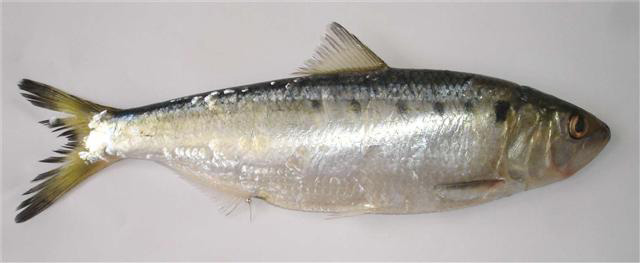Alosa algeriensis Regan, 1916
Description
Dorsal spines (total): 0; Dorsal soft rays (total): 18 - 22; Anal spines: 0; Anal soft rays: 20 - 25; Vertebrae: 53 - 57. Diagnosis: This species is distinguished from other species of Alosa entering freshwater in the Mediterranean basin by: dorsal profile convex; 40-60 thin gill rakers in individuals larger than 200 mm standard length, with 25 to 38 on its lower part; and no teeth on palatine (Ref. 10538, 59043).
Common Names
Taxonomic Hierarchy
Kingdom: Animalia
Phylum: Chordata
Class: Teleostei
Order: Clupeiformes
Family: Alosidae
Genus: Alosa
Species: Alosa algeriensis Regan, 1916
Climate Zone
Location
Biology
This species undertakes anadromous breeding migrations from the sea, where it spends most of its life, into the freshwater sections of rivers; it can also live permanently in brackish water (Ref. 10538). Males migrate upriver at 3-4 years, females at 4-5 years; it starts entering rivers when temperatures reach 14-18°C, mainly in May, and spawning commences when temperature rises above 20°C in May and June (Ref. 59043). The spawners return downstream immediately after spawning, but many die after spawning; most juveniles migrate to river mouth in first summer and remain at sea until they mature (Ref. 10538, 59043). Spawning occurs close to estuaries in fresh and brackish water (Ref. 59043). In the marine and brackish water habitats, this shad consumes small fishes, such as species of Engraulis, Sardina, and Sardinella, and small benthic crustaceans, mainly isopods and amphipods (Ref. 10538).
Habitat
freshwater
